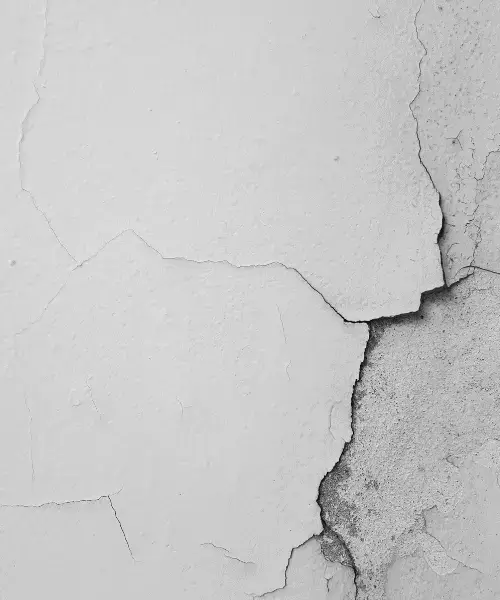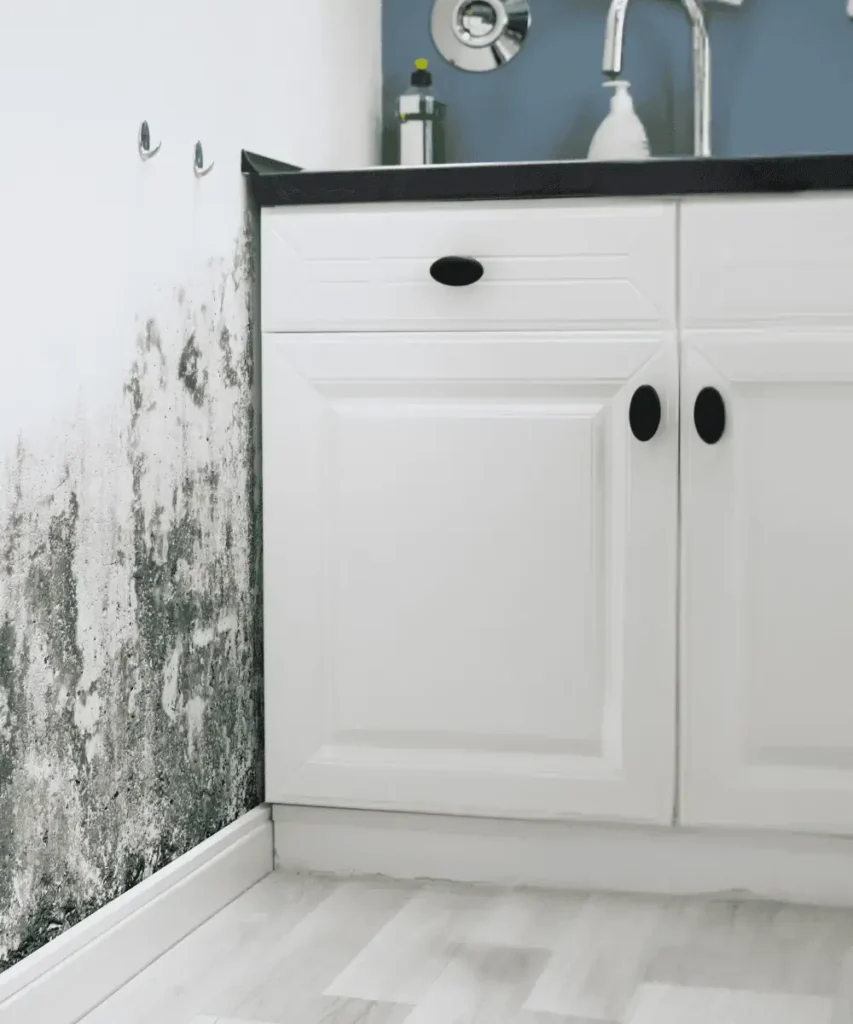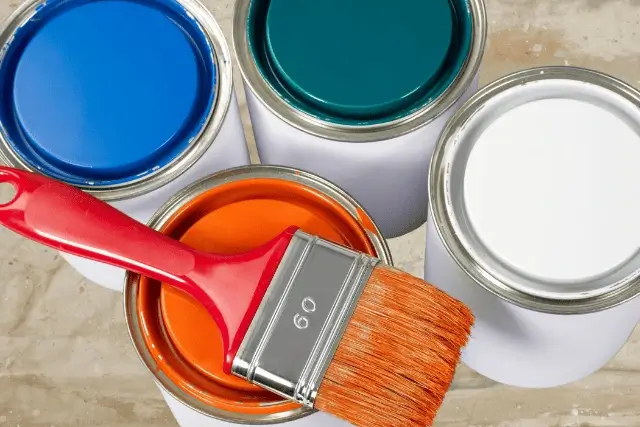You’ve probably walked past that faded wall or peeling corner for months, telling yourself it can wait another year. Recognizing the signs to repaint your home is more crucial than you might think.
Beyond esthetics, your home’s paint serves as its first line of defense against moisture, pests, and weather damage. When to repaint your house isn’t just about keeping up appearances, it’s about preventing costly structural repairs down the road. Exterior paint maintenance protects your biggest investment, while an interior paint refresh can transform living spaces and eliminate hidden health hazards. Fortunately, you don’t need a professional eye to spot when your home is overdue for a new coat.
This expert guide breaks down the five unmistakable signals that your home is crying out for repainting. By understanding these warning signs early, you’ll save money and extend your property’s lifespan for years to come.
Peeling or Cracking

Cracked and peeling paint is more than just an esthetic concern, it’s a clear sign of “paint failure” where the bond between paint and surface is breaking down. Left unaddressed, these issues can lead to costly repairs and even health hazards.
What It Indicates
Paint peeling off in sheets or flakes signals that the protective barrier on your walls has deteriorated. This breakdown exposes underlying surfaces to damage from moisture, pests, and environmental factors.
Common Causes
Several factors contribute to paint failure:
- Moisture and humidity – The primary culprit behind most paint problems, especially in bathrooms, kitchens, and basements.
- Poor surface preparation – Painting over dirty, damp, or glossy surfaces without proper cleaning, sanding, or priming.
- Incompatible paint types – Applying latex paint over oil-based paint without proper preparation.
- Aging paint – Paint becoming brittle over time, losing flexibility to expand and contract with temperature changes.
- Low-quality or expired paint – Inadequate adhesion and flexibility properties.
When to Act
Act immediately if you notice hairline cracks forming; this early stage is easier and less expensive to fix. Peeling paint in moisture-prone areas requires prompt attention since it often indicates underlying water issues that could damage your home’s structure. Similarly, if paint is coming off in sheets or revealing a glossy surface underneath, you’ll need to address surface preparation issues before repainting
For proper repair, remove all loose paint with a scraper or wire brush, sand the surface (particularly the edges between painted and scraped areas), prime any bare spots, and then repaint with quality paint. Never simply paint over cracked areas, as this guarantees the problem will return quickly.
Fading or Discolored Walls
Notice your once-vibrant walls looking dull and lifeless? Fading or discolored paint often creeps up gradually that many homeowners don’t recognize it until the problem becomes obvious. Unlike peeling paint, this subtle sign to repaint home requires a more careful assessment.
Sunlight and UV Exposure
The primary culprit behind faded paint is ultraviolet (UV) radiation from the sun. UV rays break down the chemical bonds in paint pigments through a process called photodegradation. This damage occurs in two distinct ways: UV-A rays dry out the resin in paint, causing it to shrink and crack: whereas, UV-B rays lead to color changes, resulting in fading and discoloration.
Different colors react differently to UV exposure. Darker shades like deep reds and blues typically fade faster because they absorb more UV rays than lighter colors. Even interior walls aren’t immune. Rooms with large windows or those that receive abundant natural light are most susceptible to this effect.
Impact on Esthetics
Faded paint dramatically reduces your home’s visual appeal. Rooms that once felt bright and inviting can suddenly appear tired and neglected. This issue extends beyond mere appearance, it signals that your paint’s protective properties are diminishing, potentially exposing your home to moisture infiltration.
Moreover, uneven fading creates patchy, inconsistent coloration across walls. This often happens due to furniture placement or window shadows, creating noticeable color differences in the same room. For exterior paint, fading significantly impacts curb appeal and can ultimately affect property value.
How to Assess
To determine whether fading walls require repainting, look for these signs:
- Color comparison – Notice a significant difference between the original color and current wall appearance.
- Chalky residue – Run your hand over the wall; a powdery substance indicates UV breakdown.
- Uneven coloration – Spot noticeable differences between sun-exposed areas and shaded sections.
- Dull appearance – Once-vibrant colors now appear washed out, even after cleaning.
Fading is a clear indication that your home interior needs refreshing. Although less urgent than peeling or cracking, addressing this issue promptly prevents further deterioration of your paint’s protective qualities.
Mildew, Mold, or Stains on Walls

Dark spots on your walls, accompanied by a musty odor, represent one of the most concerning signs to repaint home. These seemingly innocent marks may indicate a significant problem lurking beneath your paint’s surface.
Health and Safety Risks
Mold and mildew growth on painted surfaces extends beyond aesthetic concerns, it poses legitimate health hazards. These fungi release allergens, irritants, and sometimes toxic substances called mycotoxins. When inhaled or touched, these can trigger allergic reactions, including sneezing, runny nose, red eyes, and skin rashes. For people with asthma who are allergic to mold, exposure may trigger asthma attacks.
In more severe cases, certain molds produce compounds that may cause headaches, breathing difficulties, and even neurological system damage. Those with weakened immune systems face greater risks from these biological invaders.
Paint Failure Signs
Several visual cues indicate mold-related paint failure:
- Discoloration: Dark spots (black, green, brown, or gray) appearing on walls.
- Bubbling or peeling: Paint separating from the wall as moisture gets trapped beneath.
- Uneven texture: Bumpy or rough areas when you run your hand over the surface.
- Persistent stains: Yellow or brown marks that reappear despite cleaning.
To test whether a stain is mold or ordinary dirt, apply a few drops of household bleach to the area. If the discoloration lightens or disappears within minutes, you’re likely dealing with mold or mildew.
When Repainting Is Necessary
Painting over mold never solves the underlying problem. Instead, mold spores continue growing underneath, eventually resurfacing through cracked or peeled paint. Prior to repainting, follow these essential steps:
- Address moisture sources first (fix leaks, improve ventilation).
- Remove all existing mold with appropriate cleaners.
- Ensure the surface is completely dry.
- Apply mold-resistant primer containing mildewcide.
- Finish with quality paint formulated to resist mold growth.
For extensive mold issues, consider consulting professionals who specialize in mold remediation before proceeding with your interior paint refresh.
Conclusion
Recognizing these three warning signs saves homeowners significant time, money, and stress down the road. Paint serves as more than just decoration, it functions as your home’s first line of defense against environmental elements, moisture damage, and potential health hazards. Certainly, peeling paint, fading walls, and mold growth all signal your home’s protective barrier is failing.
Early detection remains key. Rather than waiting until extensive damage occurs, addressing these issues promptly prevents underlying structural problems from developing. Though repainting might seem like a substantial undertaking, this preventative maintenance proves far less expensive than fixing water damage, mold remediation, or structural repairs later.
Quality matters tremendously when considering your repainting project. High-grade primers and paints specifically formulated to address your particular issues ensure longer-lasting results. Additionally, proper surface preparation before painting remains essential; approximately 80% of paint failures stem from inadequate prep work.
Professional assistance might prove worthwhile, especially if dealing with extensive damage, lead-based paint concerns, or persistent moisture problems. Experts can identify underlying issues that might escape untrained eyes.
Your home represents both your sanctuary and likely your largest investment. Therefore, maintaining its protective coating through timely repainting, safeguards its value, preserves its appearance, and ensures a healthy living environment for years to come. After all, understanding these clear warning signs empowers you to take action before minor issues transform into major problems.

